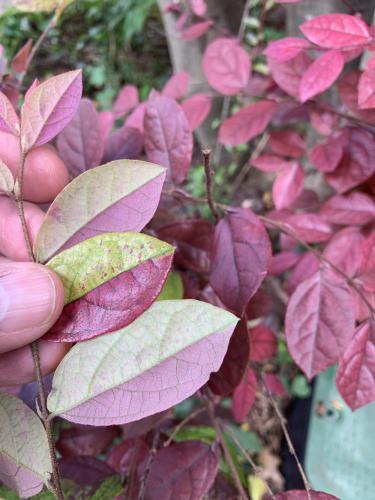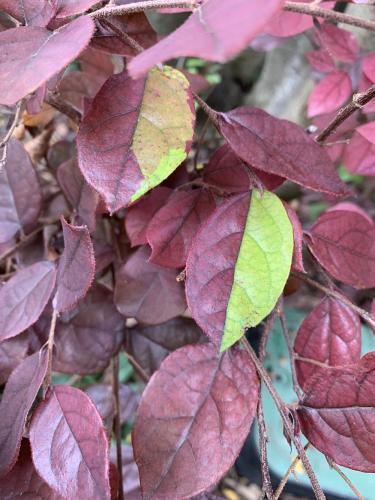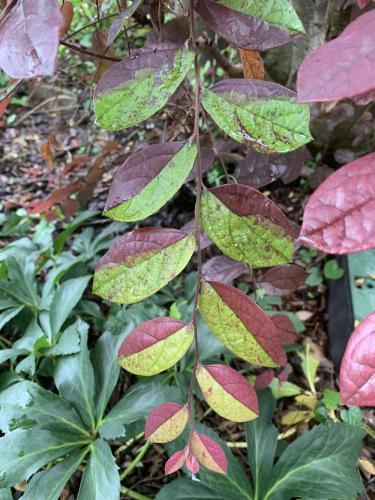Pat, you raise interesting questions. Let me try and answer your questions one at a time.
- reverse side of the leaf seems to be mostly green under the miccroscope, or there seems to be a layer of green cells on the back of the leaf. I will include a photo of the back of the leaf. I have a low power microscope and under the microsope the underside looks gray-green with a layer of primarily green cells.
- Only a few leaves show this apparent chimeric appearance (by leaves I am including an entire stem with the leaflets). Other leaves on the same plant are all red and show no sign of the bicolor. Thus, I don't think this is the beginning of a new cultivar.
- under the low power microscope I am led to think the anthocyanin is breaking down in parts of the leaf, leaving the green chlorophyll, but that's just my impression. I don't have enough power to look at the cells in any detail.
- I believe you statement about the upper epidermis containing the anthocyanin is correct, given my observations of the leaf samples
- I am close to the AgriLife facility on Coit Road in Dallas. I don't suppose you have any contacts there I could compare notes with?
- Finally, it seems on these affected leaflets the anthocyanin is disappearing and leaving the green chlorophyll as a function of time. I till try and document this.

Back of two leaflets, with the front/top of one leaflet under my thumb for comparison. Under incident light (not transmitted) with the microsope the backs of the leaflets seem uniform gray-green.


